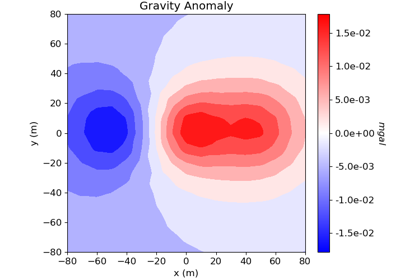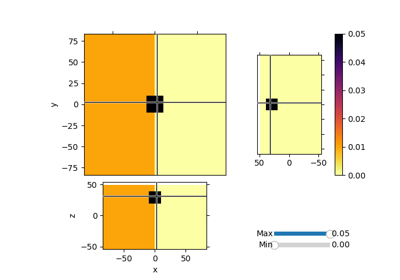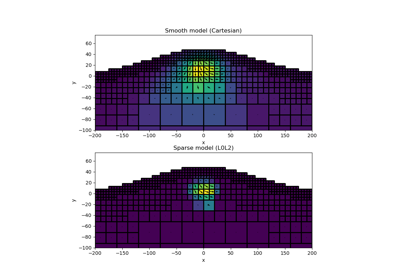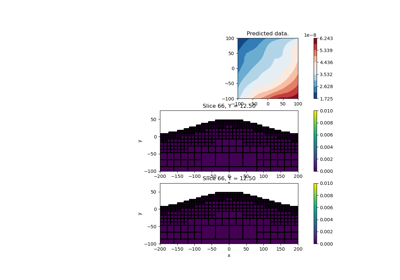simpeg.potential_fields.magnetics.Point#
- class simpeg.potential_fields.magnetics.Point(locations, components='tmi', **kwargs)[source]#
Bases:
BaseRxMagnetic point receiver class for integral formulation
- Parameters:
- locations(
n, 3)numpy.ndarray Receiver locations.
- components
strorlistofstr, default: ‘tmi’ Use a
strfor a single component or alistofstrif multiple components are simulated at each location. Component choices are:“tmi” –> total magnetic intensity data (DEFAULT)
“bx” –> x-component of the magnetic field
“by” –> y-component of the magnetic field
“bz” –> z-component of the magnetic field
“bxx” –> x-derivative of the x-component
“bxy” –> y-derivative of the x-component (and visa versa)
“bxz” –> z-derivative of the x-component (and visa versa)
“byy” –> y-derivative of the y-component
“byz” –> z-derivative of the y-component (and visa versa)
“bzz” –> z-derivative of the z-component
“tmi_x”–> x-derivative of the total magnetic intensity data
“tmi_y”–> y-derivative of the total magnetic intensity data
“tmi_z”–> z-derivative of the total magnetic intensity data
- locations(
Attributes
Methods
eval(**kwargs)Not implemented for BaseRx
evalDeriv(**kwargs)Not implemented for BaseRx
getP(mesh[, projected_grid])Get projection matrix from mesh to receivers
Notes
If predicting amplitude data, you must set include ‘bx’, ‘by’, and ‘bz’ here, and set is_amplitude_data in the magnetics.Simulation3DIntegral to True.
Galleries and Tutorials using simpeg.potential_fields.magnetics.Point#

Cross-gradient Joint Inversion of Gravity and Magnetic Anomaly Data




